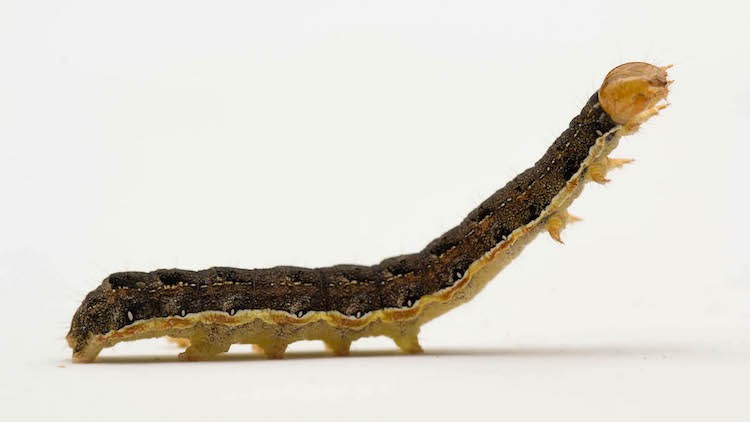As ever when it comes to insect pests in local fields, vigilance continues to be key.
While Rocky View County (RVC) monitoring programs found no major insect pest infestations in 2022, Laura Poile, an agricultural services officer with the County, said it is important to keep an eye on the populations of local insects that are known to be harmful to crops.
The County regularly monitors populations of cabbage seedpod weevil, bertha armyworm, pea leaf weevil, specific types of grasshoppers known to feed on crops, wheat midge, and wheat stem sawfly.
Fortunately, none of these pest species were cause for alarm in RVC in 2022, according to Poile.
“With continued monitoring we can forecast what the following year will be like,” she said.
A report presented to RVC’s Agricultural Services Board (ASB) on Jan. 12, co-researched by Poile, indicated cabbage seedpod weevil was present in Rocky View County in the survey conducted during early flower in 2022, but far below the threshold of infestation concerns. Similarly, bertha armyworm was also present, but in low numbers.
The County uses pheromone traps to capture and monitor bertha armyworm numbers. Bertha armyworms can be a devastating pest species if left unchecked. Bertha armyworms transform into moths when they mature, and easily migrate between fields to lay their eggs, which hatch the following year.
“Bertha armyworm populations are normally kept in check by such factors as weather and natural enemies,” the ASB report reads. “Potential damage may be more or less severe than suggested by the moth count data depending on weather and crop conditions and localized population dynamics. Research has clearly shown that very few fields are ever affected in an area with moth catches less than 300.”
There were three bertha armyworm sites identified in Rocky View County in 2022, according to the report, but all locations were well below the first warning level of 300 moths.
“Trapping will continue to be very important to watch for any possible outbreaks in the fields in (the) 2023 growing season,” the ASB report reads.
The ASB report confirmed severe weather conditions in 2022 were likely responsible for the low numbers of most pest insect species.
County monitoring programs also found little damage from pea weevils in 2002 and did not find any evidence of wheat midge at any of the five sites monitored for those pests.
Wheat stem sawfly, however, does remain a species of slight concern heading into the 2023 growing season because it has been a persistent species for a number of years now in relatively low numbers. Over time, those numbers continue to build up, and, with the right weather conditions, can lead to future outbreaks.
“The insect is still being persistent,” the report reads. “Hopefully, growing conditions and parasitoids can control the population.”
Parasitoids are targeted species of parasitic insects that lay their eggs within specific pest insects or invasive plants and, over time, bring those populations under control. Though not as dramatic in effect as spraying, these beneficial insects are often released in hard to reach areas and can be a more effective alternative to spraying over the long term.
These parasitoid species are natural enemies of pest species and represent nature’s way of naturally rebalancing insect populations. Oftentimes, crop spraying will kill both the pest species and its natural parasitoid predators, and there has been much discussion and debate in the agriculture sector in recent years about how to safeguard and use these beneficial species effectively to control pests when those pest numbers are still at pre-infestation levels.
According to Poile, the County does engage in a limited program that intentionally releases these parasitoid species to target specific pest species.
“We do participate in bio-control on a minimal scale on some of our municipal reserves for control of invasive weed species like leafy spurge, toadflax and scentless chamomile,” she said. “They have had an impact on areas where we have trouble accessing equipment. The County follows an IPM (integrated pest management) plan for control of invasive species using a number of different methods.”
Poile also confirmed the County did not engage in any active spraying programs to control these pest species in 2022.




